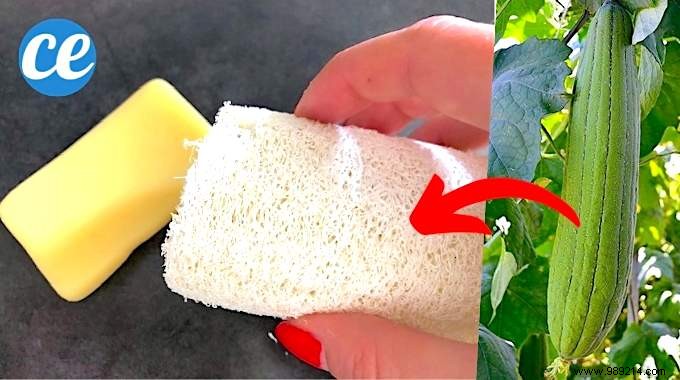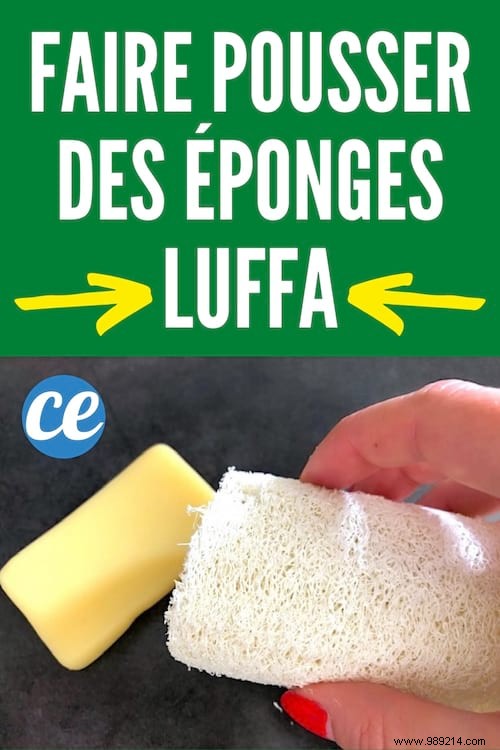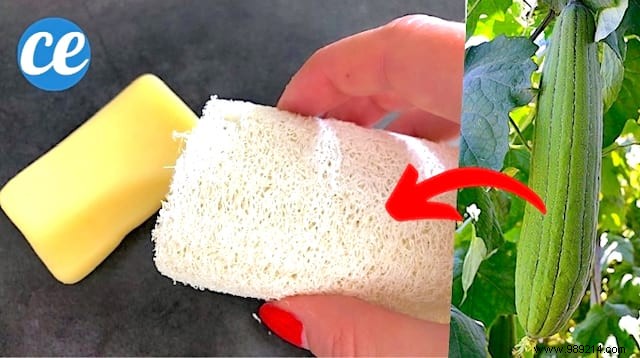
Here I show you how to have free sponges for life.
Natural and organic sponges that grow in your garden!
Thanks to a few seeds of a fruit that looks like a zucchini, you will have dozens of sponges.
This fruit is called the loofah (or loofah), and it is enough to plant it in your garden or in a flowerpot.
Your sponges will be much bigger and more durable than commercial ones.
And above all, they do not come from the seabed where natural sponges are ruthlessly pulled out.
Here's how to easily grow loofah sponges in your garden. Watch:

1. Take some loofah seeds and plant them.
2. Water them and let them grow. The fruits resemble a large gourd.
3. Do not hesitate to make them run on a stake or a trellis.
4. Once the fruit is fully ripe, pick it.
5. Remove the outer layer of the loofah with a knife.
6. This is the inner part that contains the natural sponge. Now we have to remove the seeds.
7. To do this, drill a hole in the bottom of the fruit (the wide part of the gourd), and remove the seeds.
Note: consider saving the seeds so you can replant them for free.
8. Cut the loofah into 3 or 4 slices, depending on the size you want your sponges to have.
9. Soak each section in warm soapy water.
10. Dry the pieces in the sun.

And There you go ! Now you know how to grow Luffa sponges in your garden easily :-)
Easy, fast and efficient, right?
Now you can use these sponges in the shower, for the body or to clean the dishes.
Or even clean the windshield, the porcelain sinks without scratching them. Luffas have tons of uses!
In addition, these sponges are extremely durable, much more than commercial ones.
You will make real savings by keeping your sponges 3 times longer!
Not to mention the benefits for the planet since we no longer overconsume and we don't trash the bottom of the oceans.
It is important that the loofah be very fibrous when you cut it into slices. It must therefore be allowed to mature.
It is these fibers that make it possible to wash well, because they are both rough to remove dirt well, but very soft so as not to damage fragile materials.
- For successful loofah plantings, germinate the seeds indoors in a paper cup. The old one of the setting in the ground, water the goblet to soften it. Dig a hole in the ground, carefully remove the cup, and bury the loofah roots without breaking them.
- This is a good method for those who live in regions where the hot season is slow to arrive. If so, start the seedlings indoors or in a greenhouse and transplant them after the last frosts. In general, it is said to wait for the passage of the Ice Saints, mid-May.
- To ripen well, the fruits should not be in contact with the ground, but should hang on a fence or trellis. Prepare a solid support, because if the year is hot, the fruits can become large and heavy very quickly.
- Loofah needs rich, well-drained soil to thrive. It will take 3 to 4 months to flower. Know that its flowers attract a lot of bees.
There are different types of squash that one can grow.
In the past, these gourds were also used as a nest for eggs, as a ladle or even as a bowl to store salt.
Loofah fruits can be up to 20 cm. Stems run and cling where they can, and are dotted with large leaves that resemble the sycamore.
The plant can quickly take up space, which is why we recommend running it over a fence or trellis.
And as it is pretty, it can even be decorative.
The loofah is like a long zucchini in a skin as strong as that of a melon.
Its flesh, inside, is extremely fibrous and filled with brown seeds.
The seeds are numerous, but they are easy to remove by drilling a hole in the bottom of the squash.